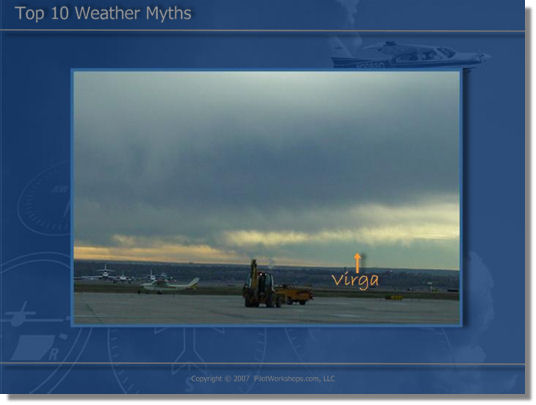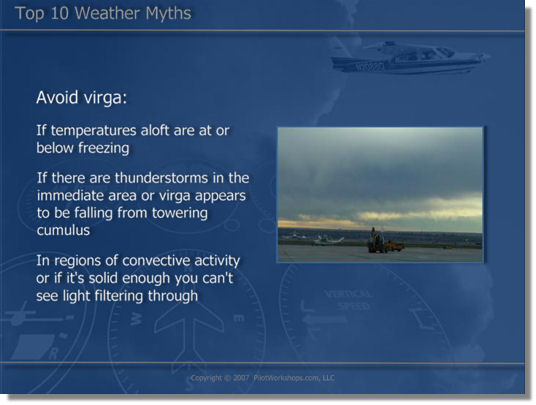Clouds To Avoid?
Source: www.pilotworkshop.com, Featuring Scott Dennstaedt


Most pilots have been taught to stay away from virga. However, not all virga is dangerous.
Virga is produced when snow or rain is falling from the base of the cloud, but evaporates in dry air before reaching the surface. The key here is the dry air below the clouds.
Evaporation is a cooling process. As the rain or snow evaporates, it cools the air, and the air becomes denser than the surrounding air. The heavier air tends to accelerate toward the earth producing a downdraft. Why is this a hazard? A large enough downdraft could cause the airplane to sink.
Virga looks a lot like a rain shaft that isn't reaching the surface or can look a lot like the extension of the cloud base itself with a tattered or shredded appearance as shown in this picture. It will often have silk-like filaments that can have a wavy texture, often falling from very high-base clouds. In most cases you can see through the virga.
When should you avoid virga?
If the temperatures aloft are at or below freezing, virga can contain supercooled liquid water, and flying through it is an icing hazard.
If there are thunderstorms in the immediate area or virga appears to be falling from towering cumulus, virga might be a sign that a downdraft or microburst is active in that region.
It is best to avoid all virga and rain shafts in regions of convective activity or virga that is solid enough that you can't see light filtering through. |